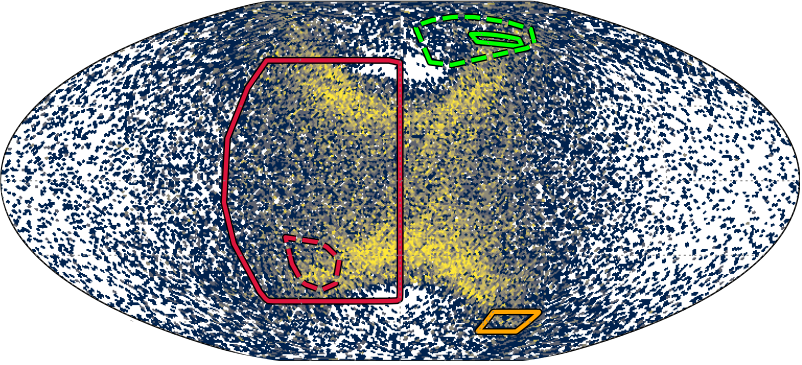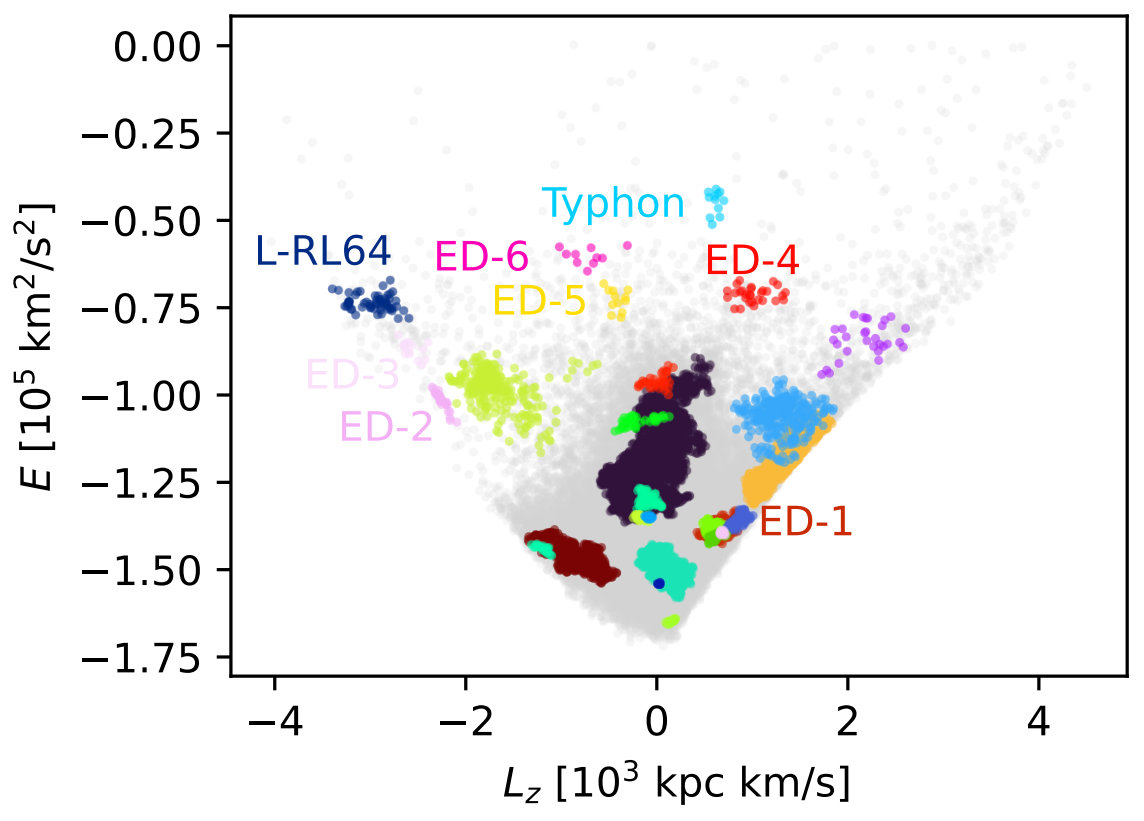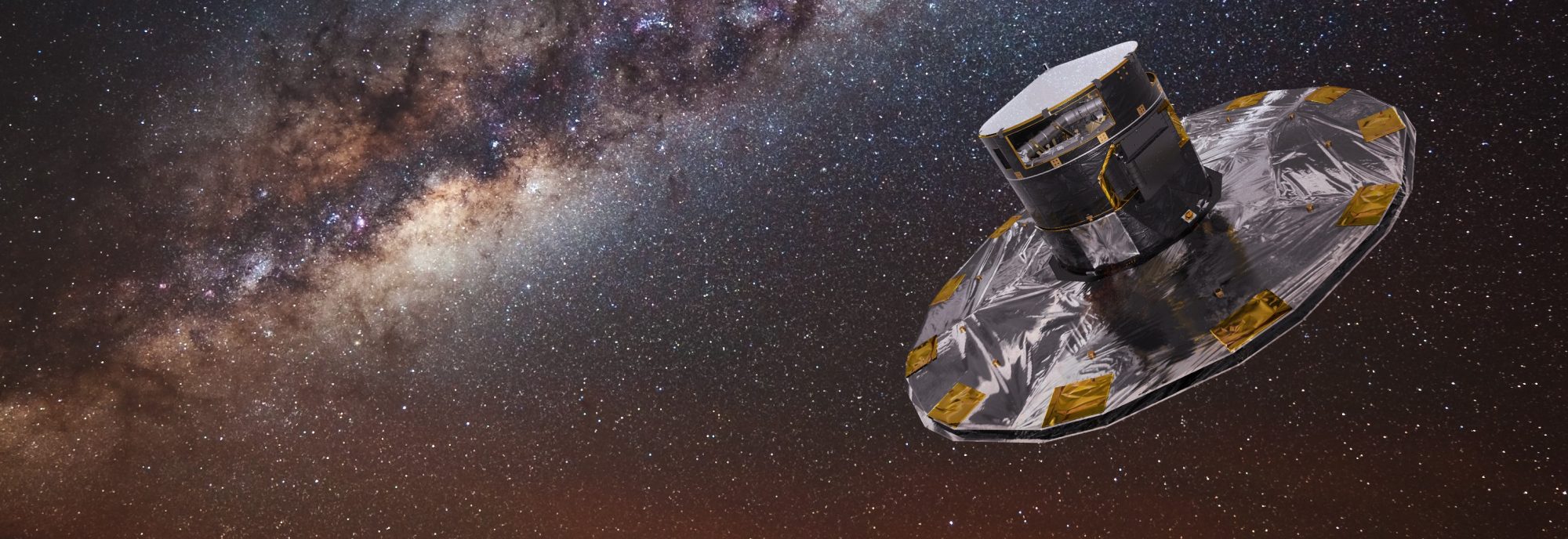Galactic Archaeology
Linking the nearby and distant halo
Linking nearby stellar streams to more distant halo
overdensities
Balbinot, E.; Helmi, A.
Gaia has enabled astronomer to study our Galaxy in exquisite detail, by enabling the use of velocity and distances for almost 2 billion stars. Coming from a background of photometric surveys, I asked the question:
Are these big accretion events fully mixed? Can we link the more distant halo overdensities with the local streams found in velocity space near the Sun by Gaia?
 Expected location of one accretion event debri observed by Gaia, with the
location of known halo overdensities shown as polygons. See more
here.
Expected location of one accretion event debri observed by Gaia, with the
location of known halo overdensities shown as polygons. See more
here.
New accretion events in Gaia DR3
The Gaia DR3 view of dynamical substructure in the stellar halo near the Sun
Dodd, E. ; Callingham, T. M. ; Helmi, A. ; Matsuno, T. ;
Ruiz-Lara, T. ; Balbinot, E. ; Lövdal, S.

Gaia is does not stop amazing astronomer, and with its latest data release (DR3) I helped search for new accretion events in Integrals of Motion. Using a method developed in-house at the Kapteyn Institute, the Galactic Archeology group was able to identify several new features in the Gaia data, combined with a variety of ground-based surveys. My role here was to provide access to this huge data-set in a friendly way, as well as provide some expertise on how to best use the Gaia data. This is inherited from my infrastructure work as part of DPAC doing validation of the catalogue before release.
